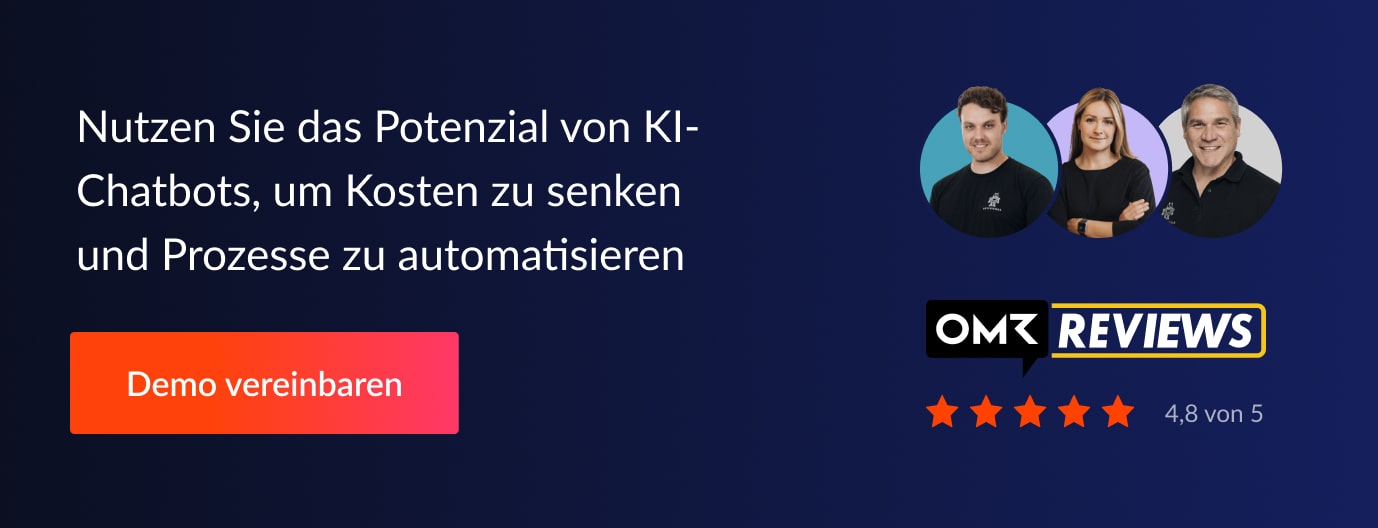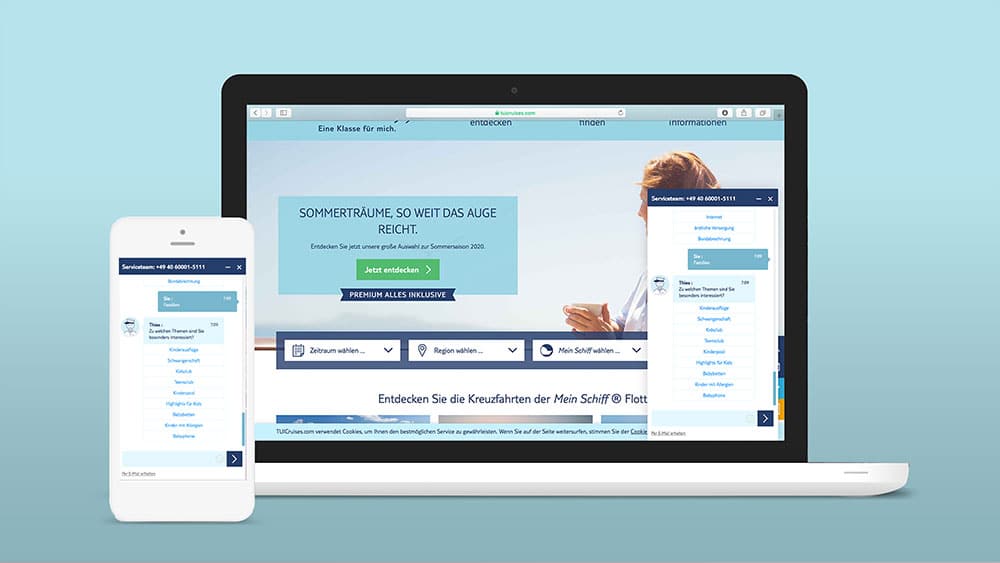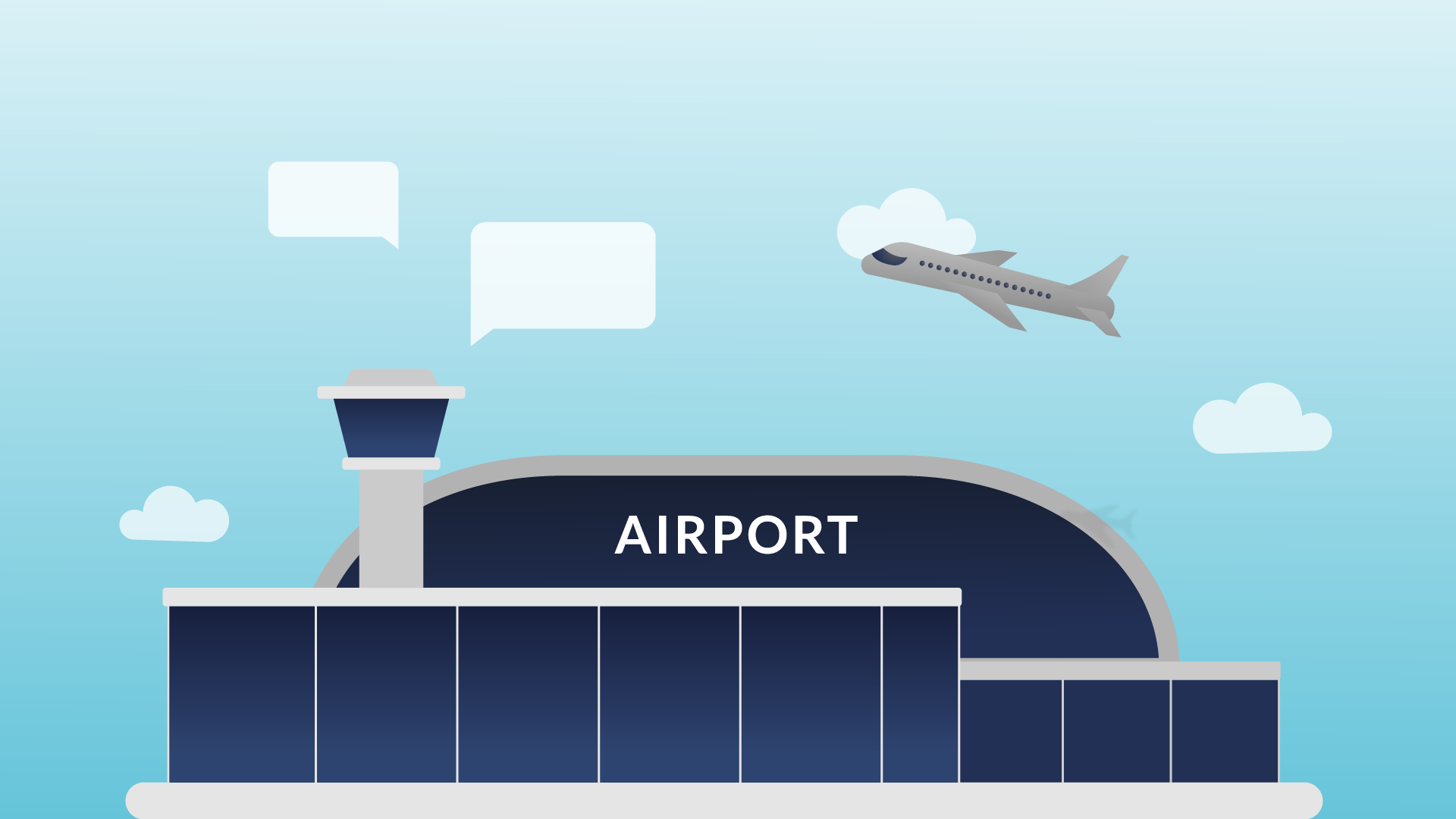What is my favourite way to travel? Is breakfast included in my trip? What are the local sights?
Anyone who travels usually has many unanswered questions, both when planning the vacation and during the trip. Unfortunately, tourists often end up in a telephone waiting loop with many travel providers. Good customer service is a sensitive issue, especially in tourism. In our opinion, vacations should not be associated with unnecessary stress. This is exactly where the potential for chat and voicebots in the tourism industry lies dormant.
"56% of consumers globally have stopped doing business with a brand or switched to a competitor due to a single bad customer service experience in the last 12 months." - Freshworks, 2019.
What chatbots can do and through which channels they are used
Chatbots and voice assistants can be used by companies not only to answer repetitive questions. Through the connection to a Conversational Middleware Platform the virtual assistants can be easily connected to other systems and also perform actions such as bookings.
They can be used not only on the company's own website, but also in other channels in which customers move and feel comfortable. For example, in messenger services such as WhatsApp and Facebook Messenger, via smart devices such as Google Home, or simply as a voicebot that you can call with your phone or cell phone.
The use of cross-media marketing leads to a higher contact rate and meets the needs of customers. For example, 70% of customers prefer brands that can be reached via different channels such as email, chat and social media (Freshworks, 2019).
Application areas of chatbots in the tourism industry
Research and book with Chatbot
Chatbots can be used by customers before a trip to research and then book the right offers.
The chatbot Thies from TUI Cruises, for example, helps users find a suitable cruise that best suits the customer's needs. First, Thies asks for the desired destination. Then the user is asked to enter further information, such as the travel period, the desired cabin type and the number of travelers. After entering the information, the chatbot forwards the user to a page with suitable offers.


The Skyscanner Messenger Bot works in a similar way. Via Facebook and Skype, the Messenger Bot helps find the best offer for a flight from over hundreds of flight sites. The bot asks for the desired airport, destination and possible time period. With this information, various offers are suggested, which can be further filtered. If a suitable flight is found, you are forwarded directly to the Skyscanner page for booking.
If these chatbots are now connected to the booking systems of the companies, the users can book the desired service directly via the virtual assistant. In e-commerce, this type of shopping, called conversational commerce, has already become established: You can buy your new shoes in a chatbot conversation.
It is only a matter of time before this trend also takes hold in tourism. The chatbot then combines the entire booking process in one conversation: Advice, purchase and payment. You can think of it as an app where you get information, buy products, and pay for them directly in the app. When it comes not only to providing information but also to paying for products and services, customers expect high security standards. For example, biometric data (fingerprint) could be used as a security barrier when booking offers. Another possibility is redirection to a payment provider, as is familiar from websites or apps.
Prepare comfortably for the journey
The application possibilities are far from exhausted here. TUI Cruises also uses its chatbot Thies to provide customers with a comprehensive service after booking through to travel and during the vacation. Guests can find out whether there is a minibar in their cabin, whether vegan food is offered, or whether they can borrow a large towel for the pool.

Chatbots as all-time ready digital companions during the holidays
Chatbots can also help tourists experience their dream vacation. For example, cities can provide information about their tourist and cultural offerings in a bundled form via a virtual assistant. This can be supplemented with other information that helps tourists without knowledge of the local language. For example, in countries where English is not widely spoken as a second language, it would be helpful for tourists to know where to find an English-speaking doctor.
This can be a good opportunity for cities and tourism associations to make places and regions more attractive for tourists.
Fast communication in crisis situations
Another major advantage of chatbots has been demonstrated in the Corona pandemic. Due to the restrictions, flights were cancelled worldwide. This triggered a flood of customer in quiries not only for airlines, but also for hotels and other providers in the industry. With the huge number of inquiries, it was not possible to process them in a timely manner with a normal customer service. This is where chatbots and voicebots can relieve the customer service enormously with their automated responses. If software with intent management was selected when the virtual assistant was created, it is also possible for customer service employees without programming skills to enter content quickly and at short notice. This relieves the IT department.
Chatbots make customers happy and reduce the workload of employees
Chatbots offer more convenience for customers: The system never sleeps - questions are answered even the night before departure. In addition, waiting times are eliminated because the chatbot answers in just a few seconds.
For companies, chatbots mean not only financial savings, but also relief for employees in repetitive and monotonous tasks. Employees only have to deal with complex requests. Furthermore, virtual assistants are a figurehead for modern travel companies: The bot signals to the outside world that the company is innovative and follows current trends.
If you want to learn even more about chatbots in the tourism industry, you can download our case study from TUI Cruises. Learn more about the project approach and the overall Conversational AI strategy.




